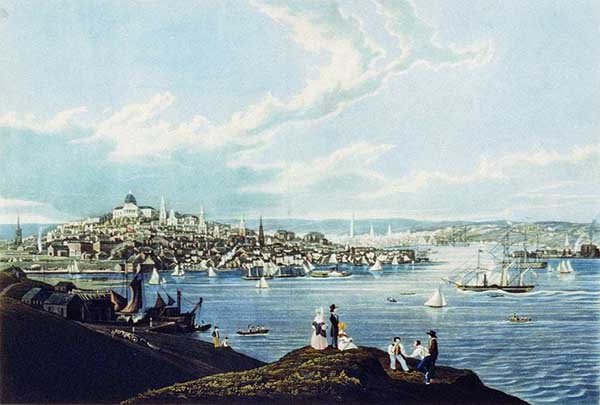Why Was Boston the Athens of America?
By Robert J. Allison, PhD
Today’s post is the first in a series of editorial “think pieces” touching upon some of the themes that will be explored in further detail over the coming months.
When James Franklin feared that his recalcitrant apprentice would runoff, he warned every other printer in town not to hire him. Benjamin Franklin, age 16, had to leave Boston to find work. He made his way to the nearest printing shop, in New York. The one printer there had no work but sent Benjamin to Philadelphia, where there were two printing presses.
Between Quebec and the Chesapeake Bay, there were eight printers; five of them were in Boston, which was in 1722 the intellectual center of British North America.
Boston could support all these printers because New England had a literate population. The religion of the puritans encouraged—mandated—an engagement with texts and arguments over religious doctrine. Boston’s leading divines were also its most-published writers, and Cotton Mather wrote not only religious tracts and sermons but works of history and natural philosophy.
By the time of the American Revolution, Philadelphia had become the economic and intellectual center of North America, in some measure because of the puritan characteristics Benjamin Franklin had brought from Boston. But Bostonians brought about the Revolution, and in the generation, after William Tudor noted the way Bostonians cherished their historical landmarks, such as Faneuil Hall, in the same way, the Athenians treasured Greece’s historical legacy.

Tudor is credited with calling Boston the “Athens of America,” suggesting an elevated culture in the old city. Tudor also helped to create the Boston Athenaeum, and in addition to being one of the most versatile writers in Boston (his essays ranged from politics and philosophy to cranberries and the purring of cats) was a business agent in the Caribbean for his brother Frederick, the ice king, and died on a diplomatic mission to South America.
His “Athens of America” note, and the nature of his own social status, suggests a kind of elitism in Boston culture, which might have some truth to it. But Boston was creating a culture that transcended lines of class and status. The Massachusetts Constitution of 1780 calls for diffusing wisdom and knowledge through the “body of the people,” and makes it “the duty of legislatures and magistrates, in all future periods of this commonwealth, to cherish the interests of literature and the sciences, and all seminaries of them,” including of course Harvard College, but also “public schools and grammar schools in the towns. . . . ”
At the time when Boston was receiving thousands of immigrants from Ireland and Germany, Massachusetts was expanding its public schools, to introduce new Americans to the ideas of the past and preparing for the future. Much of this was the work of Horace Mann, who had benefitted in his home town of Franklin from a gift of books given by the town’s namesake (the town had asked Benjamin Franklin for a bell in return for renaming their town in his honor; he thought they could use sense more than sound, so sent them a library).
Charles Dickens reported from Lowell in the 1840s on two things about the mills which would surprise his English readers. The women working in the Lowell mills, in addition to making Massachusetts the leading American industrial state, belonged to lending libraries, and they published a journal which he said rivaled English periodicals.
Boston became the “Athens of America” because of its literate and engaged citizenry, and because wisdom and knowledge, and the advantages of education are diffused throughout the body of the people.
Robert J. Allison is Professor and Chair of the History Department at Suffolk University in Boston, Massachusetts. He also teaches at the Harvard Extension School and in 1997 received the Petra T. Shattuck Excellence in Teaching Award. He is the author of The Crescent Obscured: The United States and the Muslim World 1776-1815; Stephen Decatur: American Naval Hero 1779-1820; A Short History of Boston; and The Boston Massacre. His most recent work is The American Revolution: A Concise History. Allison is the president of the South Boston Historical Society, a Fellow of the Massachusetts Historical Society, and vice president of the Colonial Society of Massachusetts.
